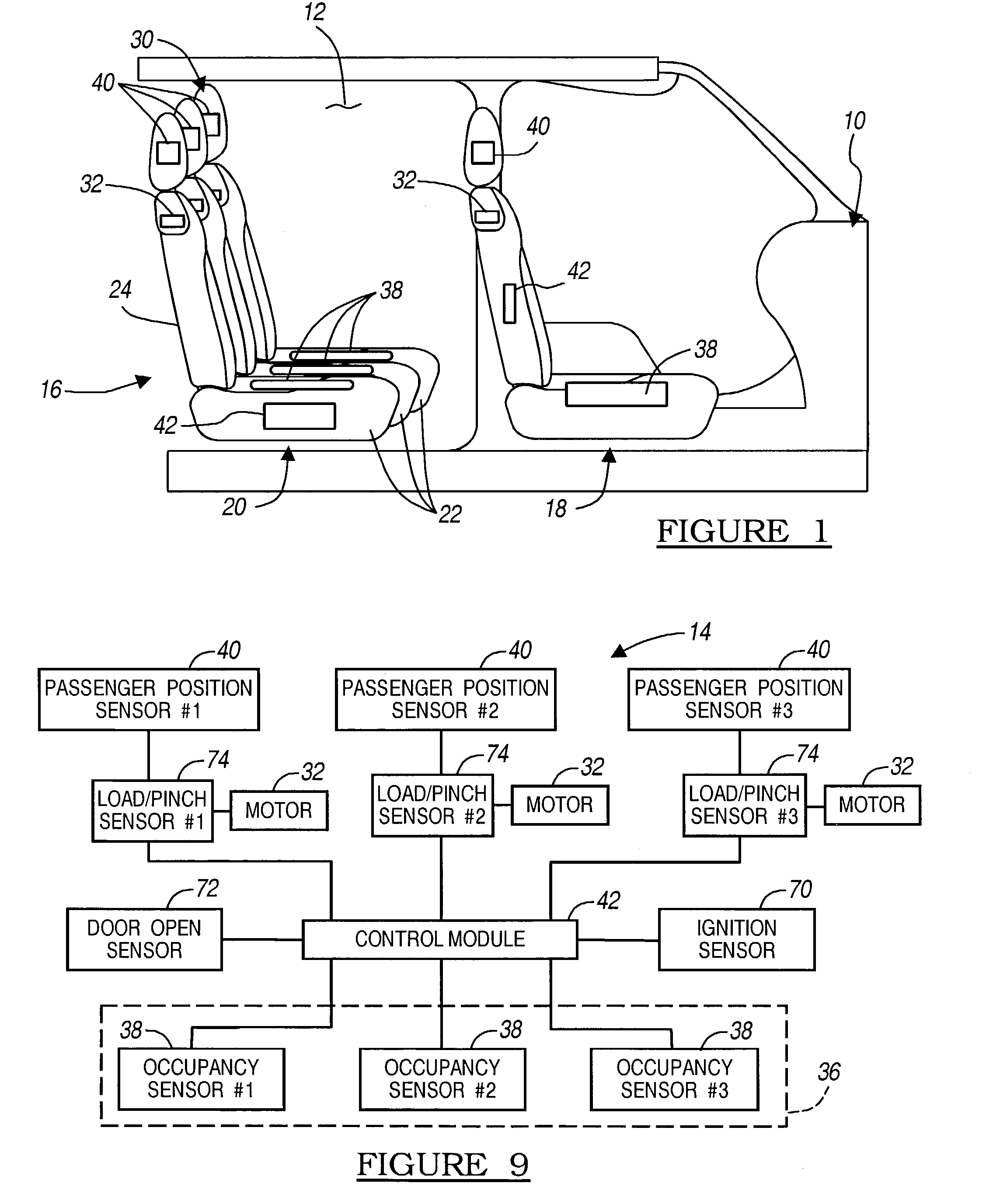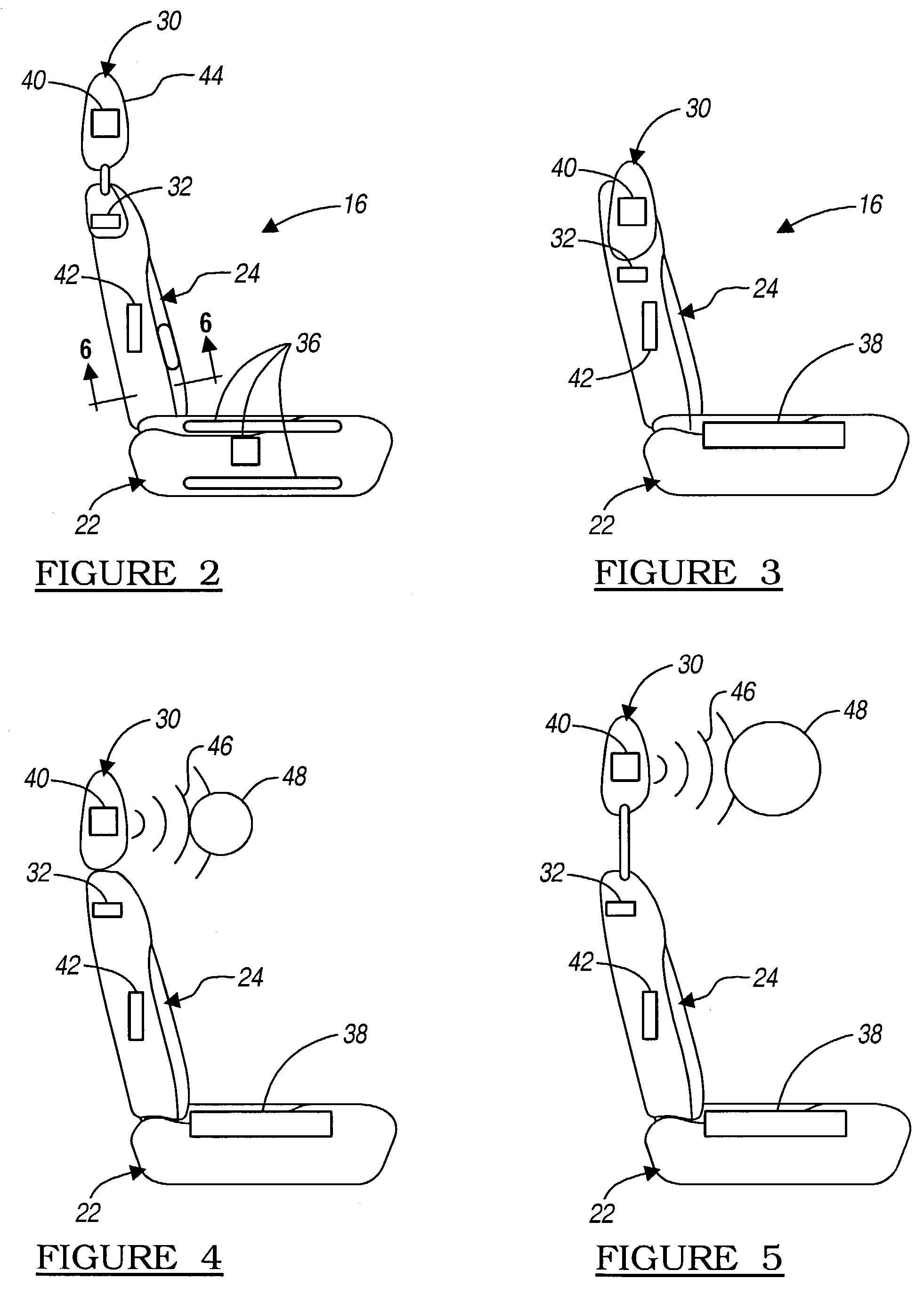Automatic headrest adjustment control system for a vehicle seat assembly
a technology of automatic adjustment and vehicle seat, which is applied in the direction of chairs, pedestrian/occupant safety arrangements, tractors, etc., can solve the problems of limited system adjustment of vehicle seat components, especially the headrest, and inability to protect passengers of different ages, so as to increase the visibility through the passenger compartment
- Summary
- Abstract
- Description
- Claims
- Application Information
AI Technical Summary
Benefits of technology
Problems solved by technology
Method used
Image
Examples
Embodiment Construction
)
[0022]Referring now to the Figures, FIG. 1 shows a motor vehicle 10 having an interior passenger seating compartment 12 having an automatic headrest adjustment control system. The control system is incorporated into a vehicle seat assembly 16 to provide passengers whiplash reduction protection in case of a vehicle collision. Vehicle seat assembly 16 is provided in passenger seating compartment 12 in a variety of seating arrangements, such as the front seat 18 of a vehicle, or, alternatively, as part of stand-alone or bench-type rear passenger seats 20.
[0023]Referring now to FIGS. 2–5, an automatic headrest adjustment control system is incorporated in vehicle seat assembly 16. Seat assembly 16 includes a seat bottom 22 and a seat back 24 extending generally vertically therefrom. The seat bottom 22 can be of various constructions but generally includes a structural frame covered by a foam pad layer or cushion surrounded by an outer finish cover material. The structural frame (not sho...
PUM
 Login to View More
Login to View More Abstract
Description
Claims
Application Information
 Login to View More
Login to View More - R&D
- Intellectual Property
- Life Sciences
- Materials
- Tech Scout
- Unparalleled Data Quality
- Higher Quality Content
- 60% Fewer Hallucinations
Browse by: Latest US Patents, China's latest patents, Technical Efficacy Thesaurus, Application Domain, Technology Topic, Popular Technical Reports.
© 2025 PatSnap. All rights reserved.Legal|Privacy policy|Modern Slavery Act Transparency Statement|Sitemap|About US| Contact US: help@patsnap.com



